You’re Inviting Snakes Into Your Home If You Use This on Your Lawn
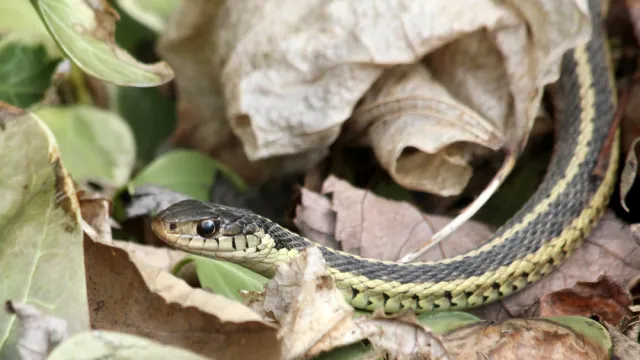
With spring in full bloom and summer quickly approaching, homeowners across the U.S. are taking their annual first steps towards preparing their yards for the return of warm weather and plentiful sunshine. But as home landscapers roll out their mowers and start pulling weeds for the first time this season, you may want to consider keeping one popular item off of your lawn if you’re concerned about attracting snakes into your home. Read on to find out what product could be drawing in the slithering serpents.
READ THIS NEXT: You’re Inviting Snakes to Your Home If You’re Storing This Right Outside.
Keeping snakes away can often be about maintenance rather than design choices.
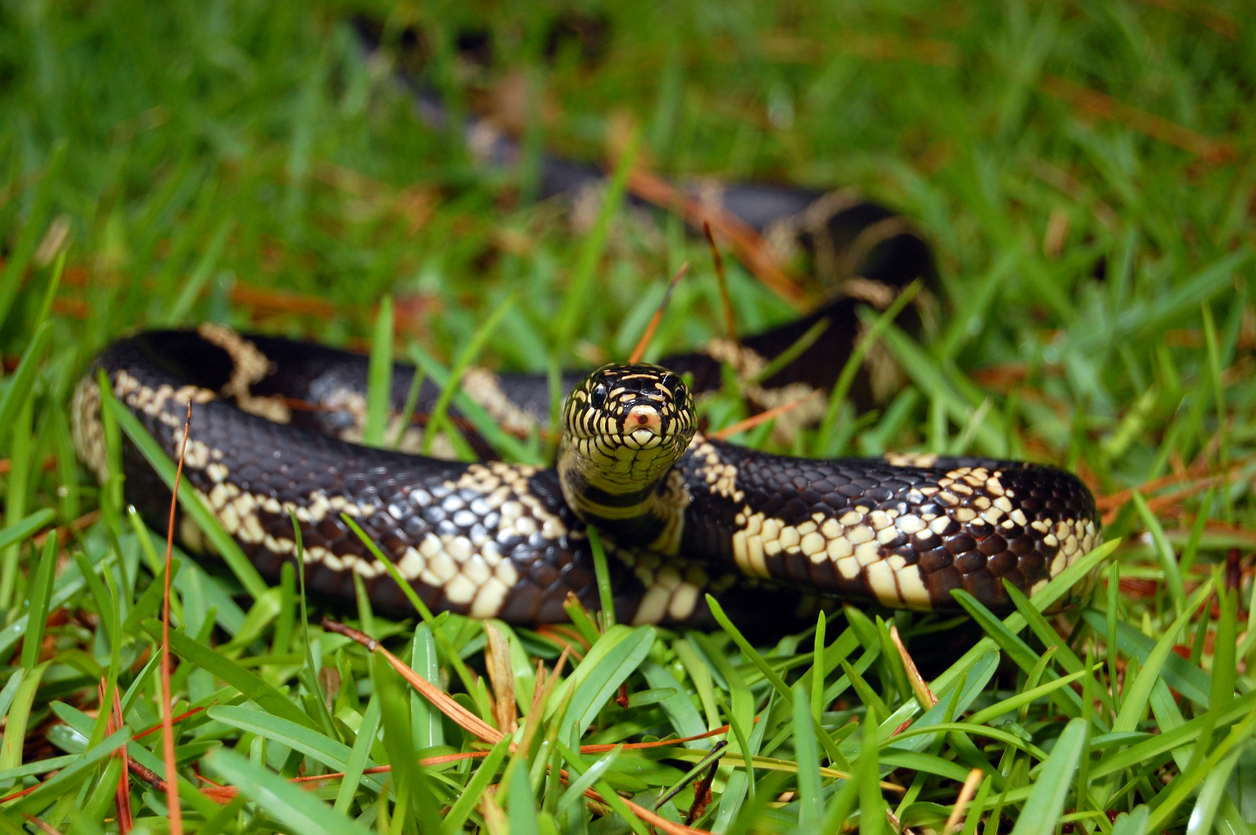
Even though some snake activity can be unavoidable—and even a sign of a yard’s healthy ecosystem—homeowners will often go to great lengths to keep their property from being overrun by serpents. But experts warn that instead of adding items like snake repellants to your grass and garden, you should consider removing one thing they’re also known to love first.
“If you have tall grass in your yard, there’s a good chance that snakes will start to frequent the area,” Craig Zeigler, owner of Agronomic Lawn Management, tells Best Life. “They’re known for being attracted to it because it provides them with cover and makes it easier for them to hunt prey. If you have a snake problem in your yard, the best thing to do is to cut down the grass and remove any other potential hiding spots.”
Because of this, experts recommend sticking to a regular mowing and weed whacking schedule as the number one way to prevent your lawn from becoming a serpent sanctuary.
Using one product as part of your landscape design could be enticing snakes onto your property.
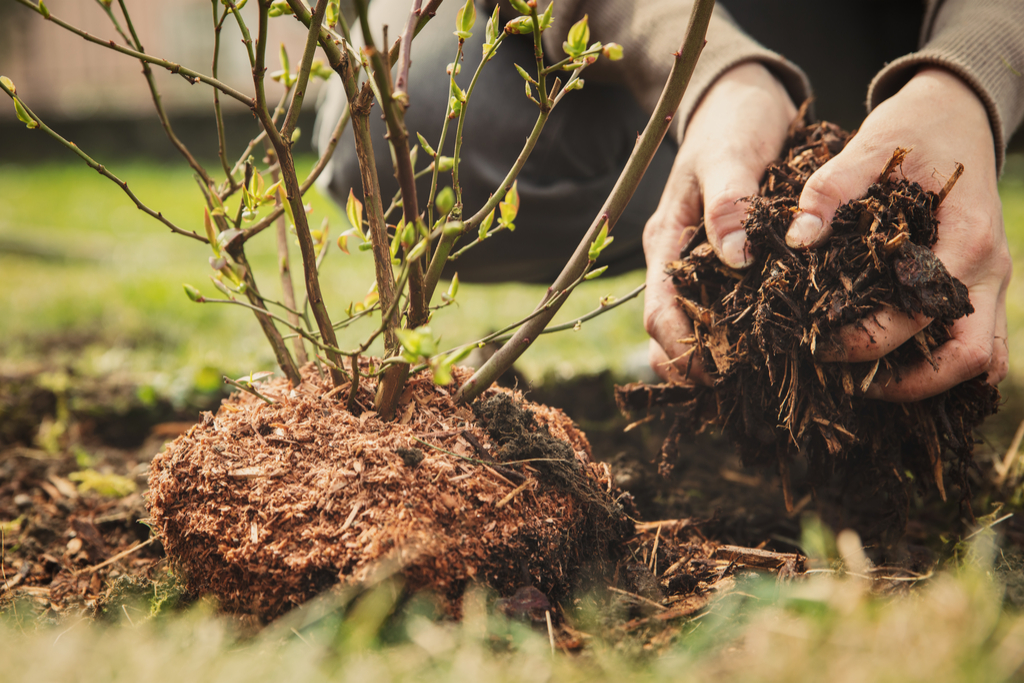
But even if you’re keeping your lawn well-manicured, experts warn that other popular design elements could be making your property sought after by snakes. Surprisingly, this includes one product commonly incorporated into yards and gardens: mulch.
Even though tossing down hardwood or pine straw mulch and reapplying it as needed can be a great way to keep weeds at bay and your lawn looking well-maintained, experts warn that the material can also inadvertently become a home or hiding place for the types of prey snakes seek out such as insects and small rodents. And in many cases, snakes can use thick mulch beds as a burrow themselves, making it an attractive hiding spot with easy access to some of their favorite meals, the Mississippi Clarion-Ledger reports.
RELATED: For more up-to-date information, sign up for our daily newsletter.
How you apply and store your mulch can affect the types of animals it attracts.
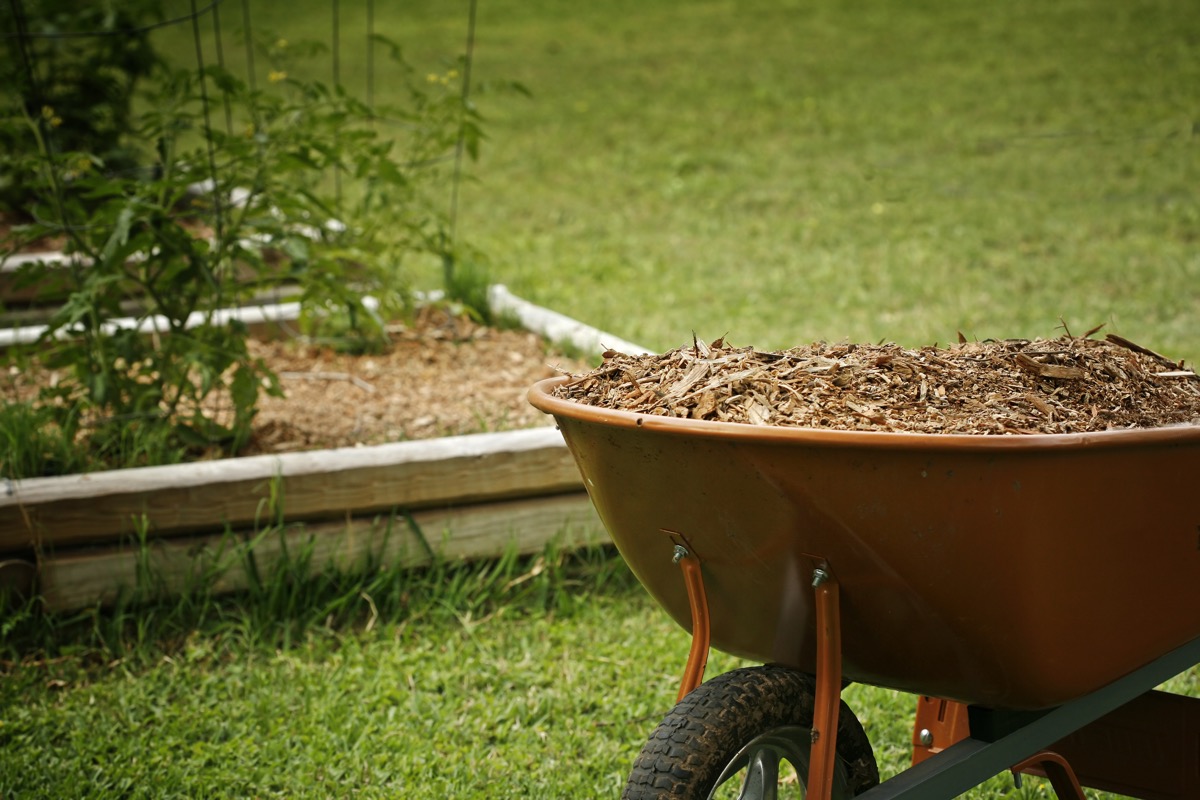
As a decorative and functional part of the yard, it’s not hard for gardeners to go overboard with how much mulch they lay down at the beginning of each season, or when replanting a particular area. But according to experts, you can avoid inviting snakes by avoiding putting down a bed that’s too thick.
At most, gardeners should stick to using only as much is needed to combat weed growth and should never exceed six inches, Chris Petersen, co-chair for Partners in Amphibian and Reptile Conservation (PARC), tells sustainability website Treehugger. Naturally, this also includes eliminating any piles of excess mulch that remain around the yard for the following season.
Consider using items other than mulch to decorate your lawn if you’re concerned about snakes.
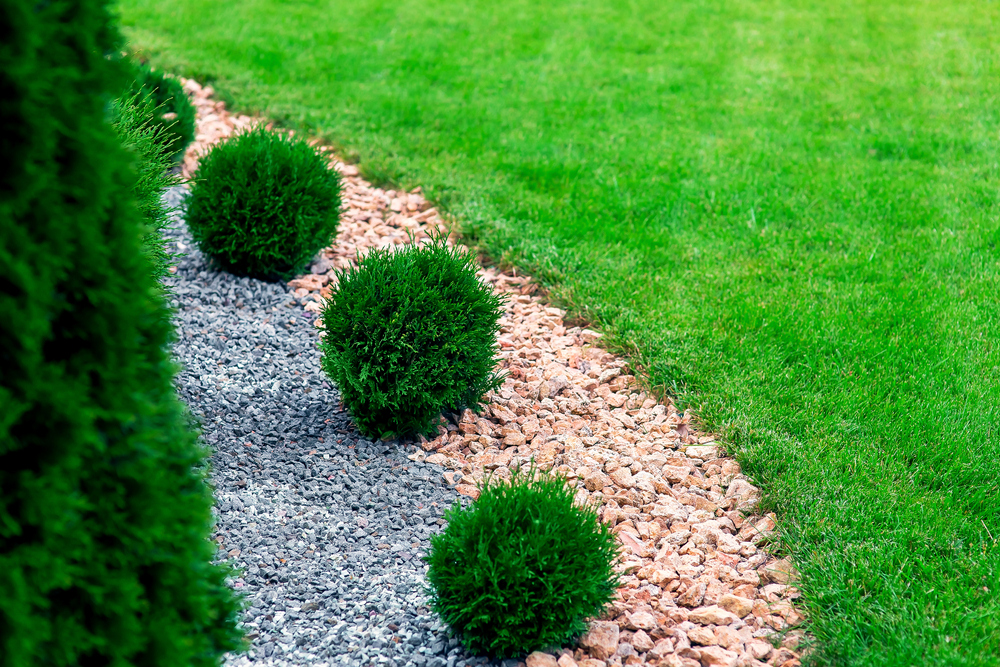
Fortunately, other design options can be less appealing to snakes that you can easily swap for mulch. According to experts from Utah State University, using gravel or other tight-fitting small stones denies snakes and their prey shelter while also creating a surface that’s more difficult for them to move on. Just be sure to avoid using large rocks or piles of bigger stones: Their small crevices can create the same lodging opportunities as a large mulch pile, Peterson warns.
And besides how you adorn the ground, what you plant can also affect which animals choose to take up residence near your home. “Any place that is low to the ground and can provide snakes with a dark hiding place will draw them to your yard,” Charlie Church, owner of pest control company Getem Services, tells Best Life. “Snakes, much like other creatures, stay in places where they have access to food, water, and shelter. They like to hide out around the base of your home where there isn’t a lot of foot traffic from predators, so when planting trees and shrubs around this area of your home, remember to keep them a few inches off the ground so snakes won’t be tempted to build their homes in them.”
READ THIS NEXT: You’re Inviting Snakes Into Your Car With This One Bad Habit, Experts Warn.